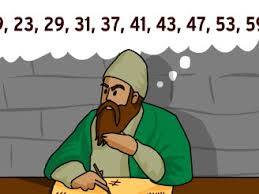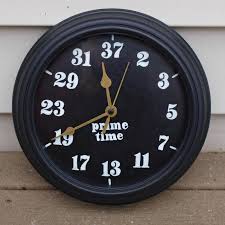I’ve participated in several author interviews for other blogs. My most recent is with Morgen in the UK at, Morgen’s Author Interviews. One question that often comes up is to name something quirky about my writing. While there are many quirks in any author’s writing, especially one such as me, I invariably mention my penchant for prime numbers.
 In the Misaligned series, almost every number in the books is a prime number. The story includes many ancient artifacts powered by extra-dimensional energy channeled by higher-dimensional stones. The number of stones in each artifact is always a prime (2, 3, 5, & 7). Creatures and entities from higher dimensions come from the fifth or the seventh dimension. Trivial things like the number of people in a family or the depth of the salt mine storage facility (151 meters) are primes. I even attach importance to the three primary colors (red, yellow & blue).
In the Misaligned series, almost every number in the books is a prime number. The story includes many ancient artifacts powered by extra-dimensional energy channeled by higher-dimensional stones. The number of stones in each artifact is always a prime (2, 3, 5, & 7). Creatures and entities from higher dimensions come from the fifth or the seventh dimension. Trivial things like the number of people in a family or the depth of the salt mine storage facility (151 meters) are primes. I even attach importance to the three primary colors (red, yellow & blue).
Of course I did make exceptions for awkwardness, where I use a round number like 500 or 1,000 instead of the nearest primes (499 and 997), but as long as the prime number doesn’t detract from the flow, I use it.
Why this strange predilection for primes, I guess because they’re interesting, and not just to a nerdy ex-engineer turned YA author. Some of the brightest mathematical minds throughout history have been fascinated by prime numbers, Euclid, Euler, and Leibniz among them.
 Here‘s a Prime Time clock and a few Fun Facts about prime numbers:
Here‘s a Prime Time clock and a few Fun Facts about prime numbers:
- Although there are hints that the Egyptians had some knowledge of prime numbers the oldest surviving records for prime number study belong to the Greeks.
- In 300 BC the Greek mathematician Euclid proved that there are infinitely many prime numbers
- 1 is not a prime number
- 2 is the only even prime number
- There are 168 prime numbers below 1,000
- Public-key cryptography uses prime numbers for computer security
- As of early 2013, the largest proven prime number has 17,425,170 digits.
Silly Quirks about primes:
- Emirps are prime numbers even when their digits are reversed. There are 18 pairs below 1,000. The first three are (13,31), (17,71), (37,73), the largest pair in that group is (199,991).
- Palindromic primes remain the same when they are read backwards. Counting the single digit primes (2, 3, 5, & 7) there are twenty such primes with values below 1,000, the first three non-single digit palindromic primes are 11, 101, and 131.
- Dihedral primes are those that remain prime when read upside down or mirrored in a typical seven segment calculator display. There are only five of them below 1,000 (2, 5, 11, 101, & 181).
- There are many unproven ideas involving prime numbers. One of the oldest and most famous is Goldbach’s conjecture. In 1742 mathematician Christian Goldbach proposed that every even integer greater than two can be expressed as the sum of two primes. As obvious as this sounds, it remains unproven. Using computers it has been proven up to 4×10^18.
Thanks for reading.
Armen
Additional Information
Scientific American article about prime numbers
Math is Fun’s list of Primes less than 1,000 & a Prime number calculator.


Writerick, thanks for reading. It is a bit geeky, but then again so am I. This post is actually much deeper than anything in my story – it’s more background info that’s somewhat tangentially related to my writing. I’m certainly no suggesting that anyone else go all prime 🙂
Intriguing but, I must say, more than I will ever, ever need to know in my own attempts at writing. – – – However, it is interesting that you put this info to good use in your own writing. Thanks.